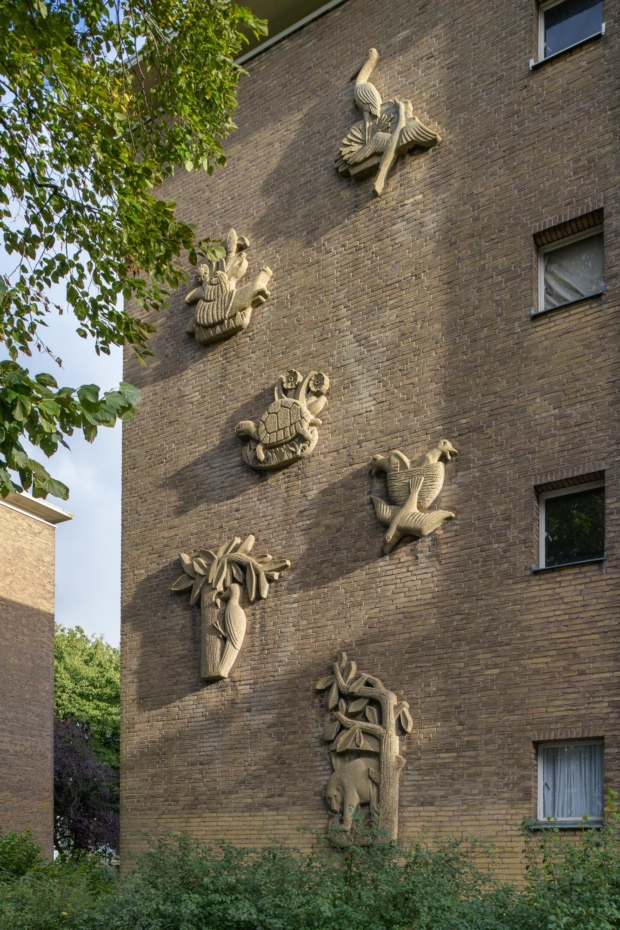Cycling route Reconstruction Art Escamp
Start: Theatre & Filmhuis Dakota, Zuidlarenstraat 57, The Hague
End point: Marinipark
Time: approx. 2 hours
Introduction
Not many people will immediately think of art when they think of the Escamp district. Yet there are more than a hundred sculptures in this vast area. The fact that there is so much art here has to do with the time in which this district was built. Due to the housing shortage after World War II, The Hague expanded rapidly and new neighbourhoods were created (e.g. Moerwijk, Bouwlust). The so-called percentage regulation applied to the reconstruction. This meant that 1% of the construction costs were intended to enrich this district with beautiful art. Hence all those statues between the flats and those reliefs and mosaics on houses, schools and churches. This public art tells us a lot about the compartmentalised Netherlands of the time.
What is special is that the newer art in this part of the city also often has a strong link with the architecture. Just like the reconstruction art of the past. Just think of the colourful ceramic reliefs in Wateringse Veld; the Vinex district that was added later. Haven't noticed all that art yet? Then it is time for an exploration of old and new art in Escamp.
How does it work?
The whole route is marked on the map, the starting and finishing points are marked as well as the works of art. You can join at any location and at any time. The route goes clockwise. There is a short explanation of each sculpture. Would you like to know more about an artwork? Then click on Read more.
The bicycle tour takes you past seventeen works of art, but there are many more sculptures to be seen in Escamp. Curious? Look them up on bkdh.nl.

















